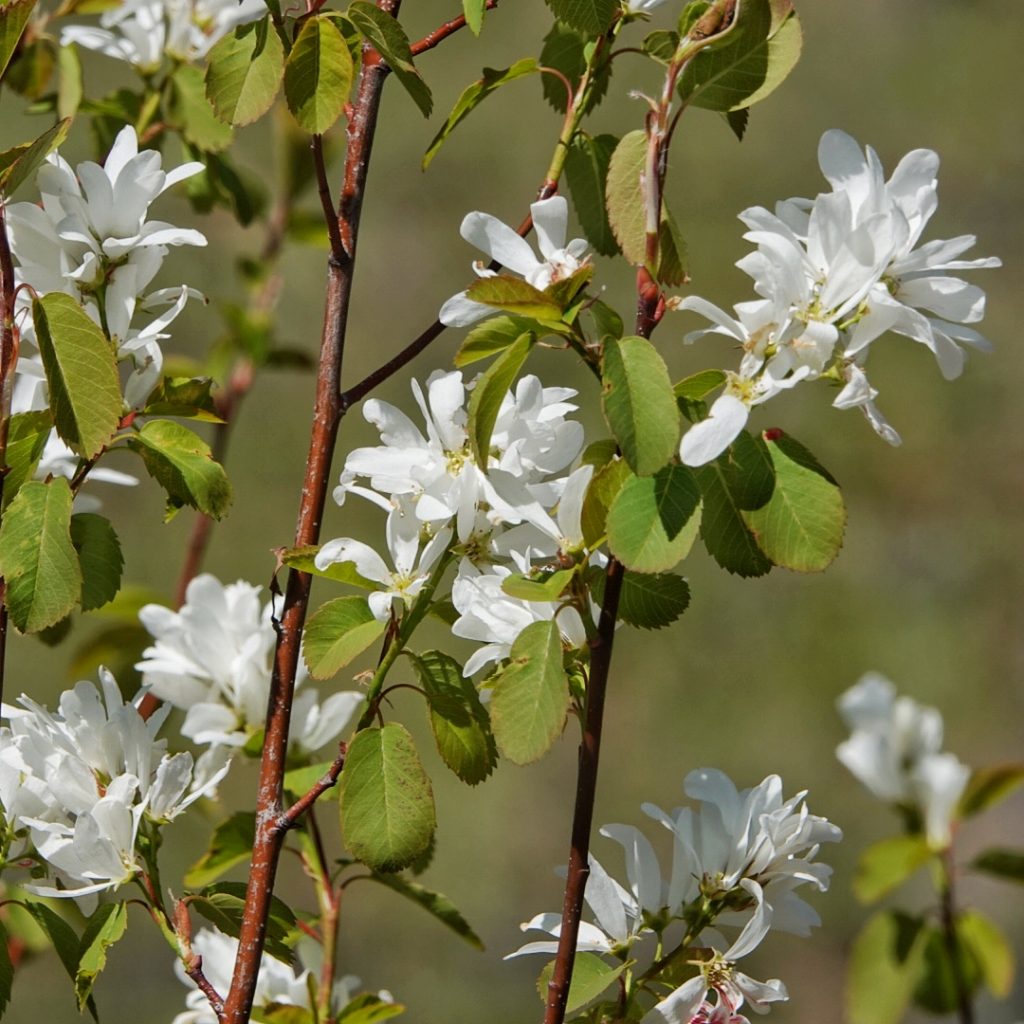
While I have always called this member of the family Rosaceae western serviceberry, there is a lengthy list of colloquial common names that have been applied to it, including saskatoon, Pacific serviceberry, alder-leaf shadbush, dwarf shadbush, chuckley pear, pigeon berry, and western juneberry.
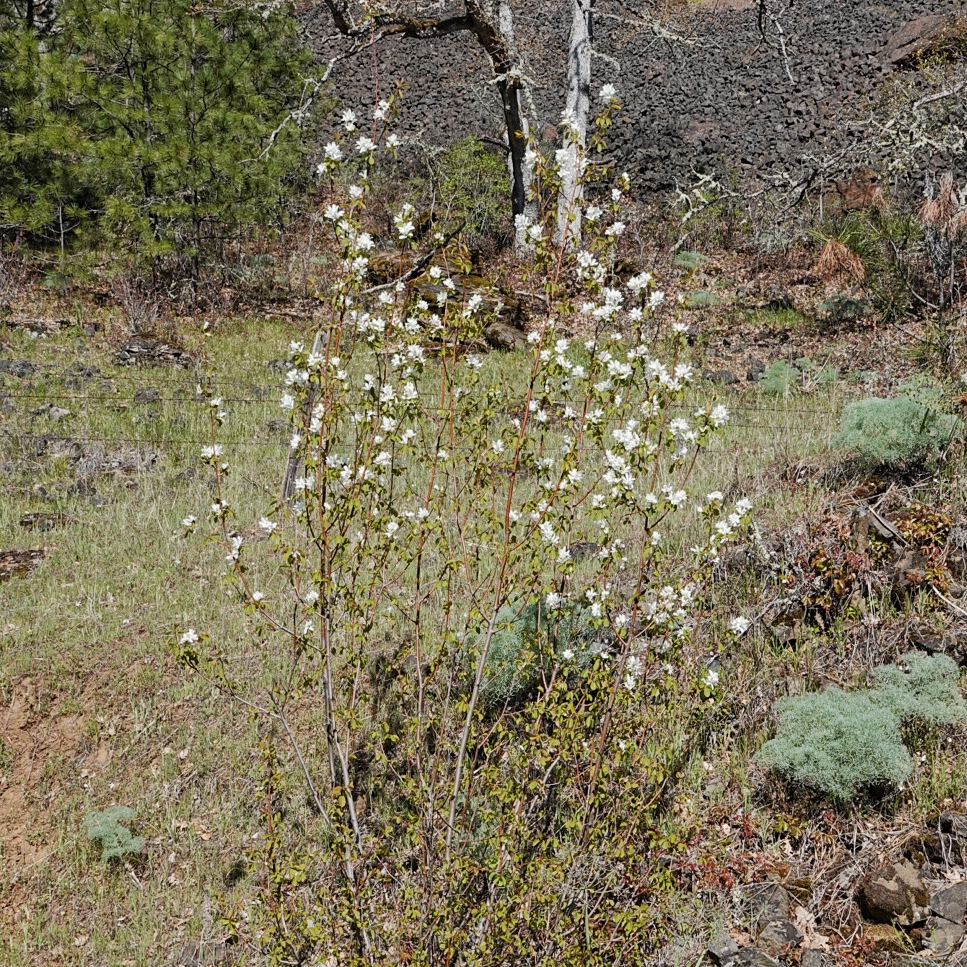
As might be expected indigenous people have rich traditions with this plant, primarily because of its delicious fruits (technically not a berry but a pome) which are up to 20% sweeter than native blueberries. Besides eating the pomes raw, cooked, and in cakes, they mixed dried berries with dried meat (often buffalo) and fat, to make pemmican.
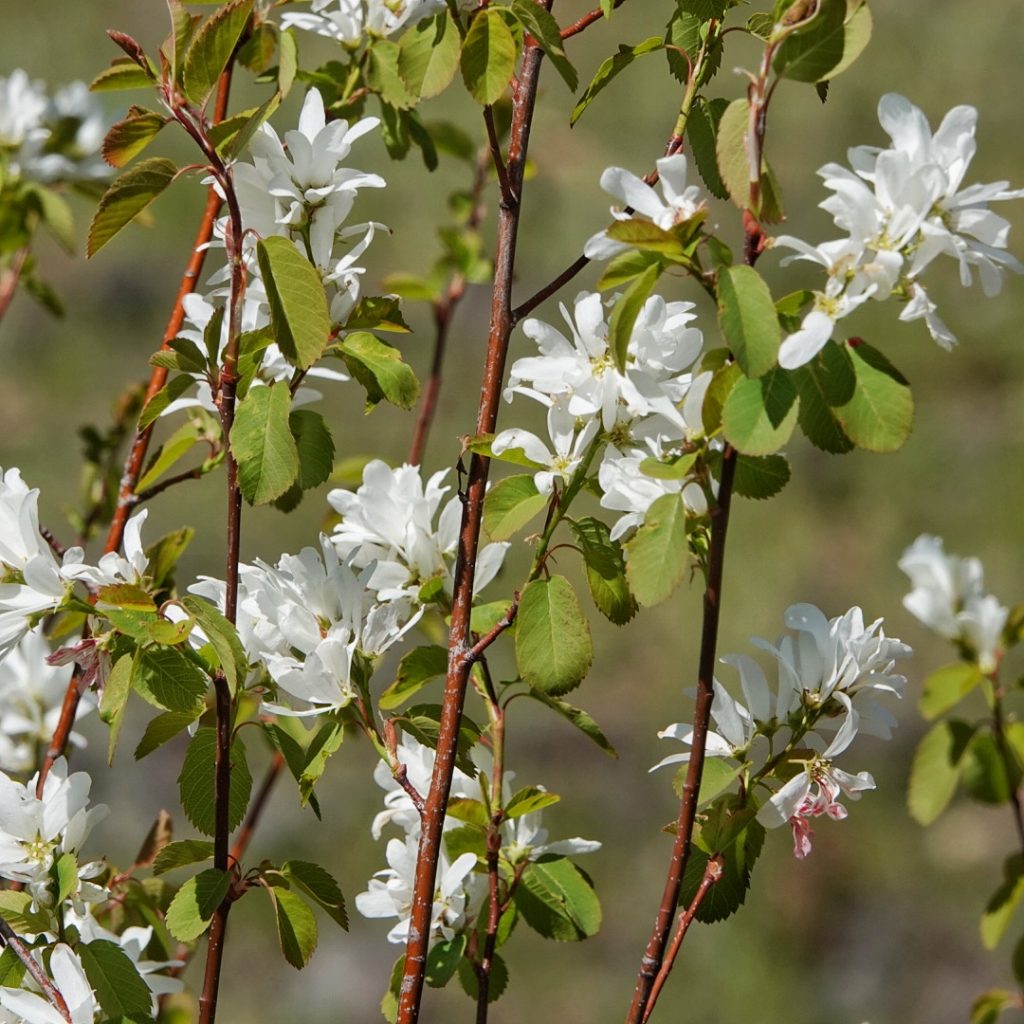
Many parts of the plant were used by indigenous peoples for medicinal purposes, but it has fallen out of favor with modern herbalists because of high hydrogen cyanide content in leaves and bark. Indigenous people used the wood to make rope, arrows, disks for a gambling game, rigging for halibut fishing, and in basketry, and used the juice of the fruit as a dye.
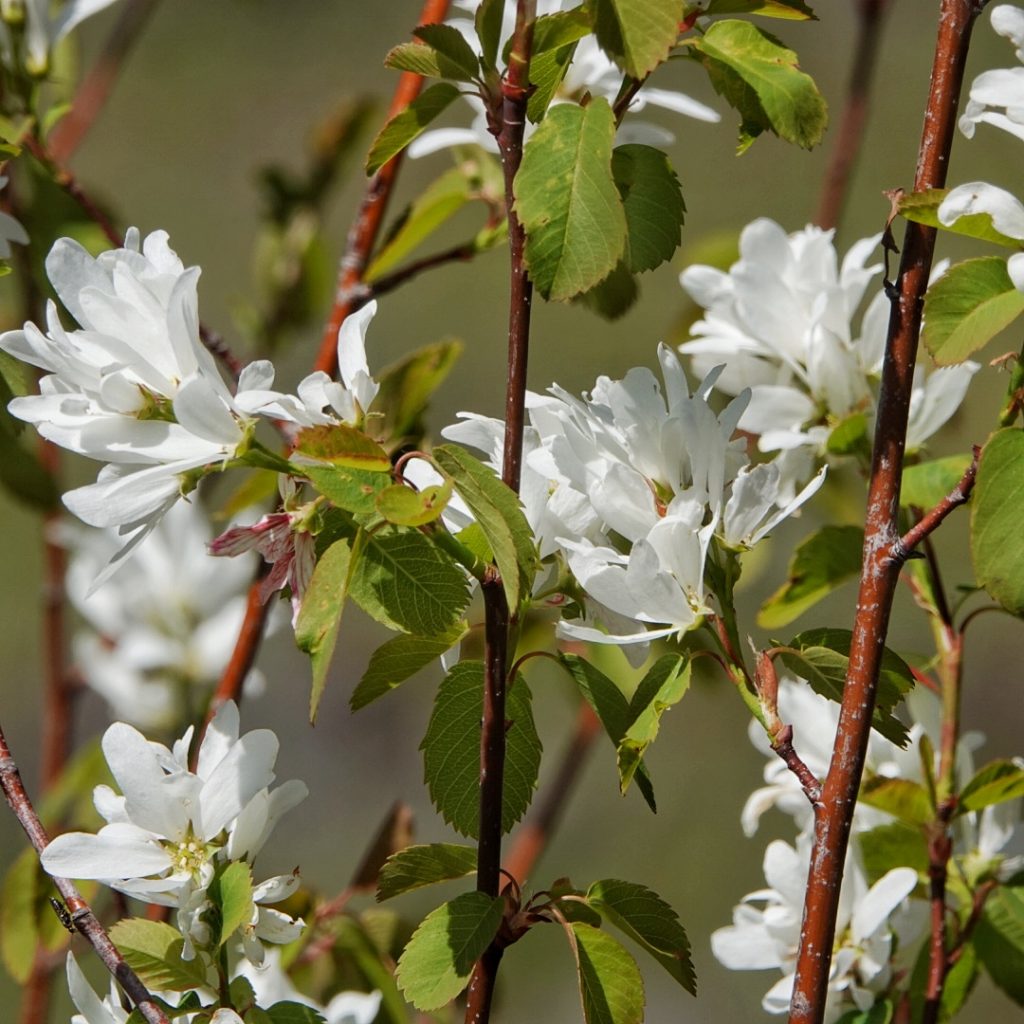
Though they are most commonly encountered as a shrub or small tree, Amelanchier alnifolia can get very large. There is one at Beacon Rock SP along the Columbia River that is 42’ tall, with a 43’ crown span, and 3.3’ in circumference. But even bigger is one in Clackamas, Oregon, which is 44’ tall! That is a whole lot of serviceberries!
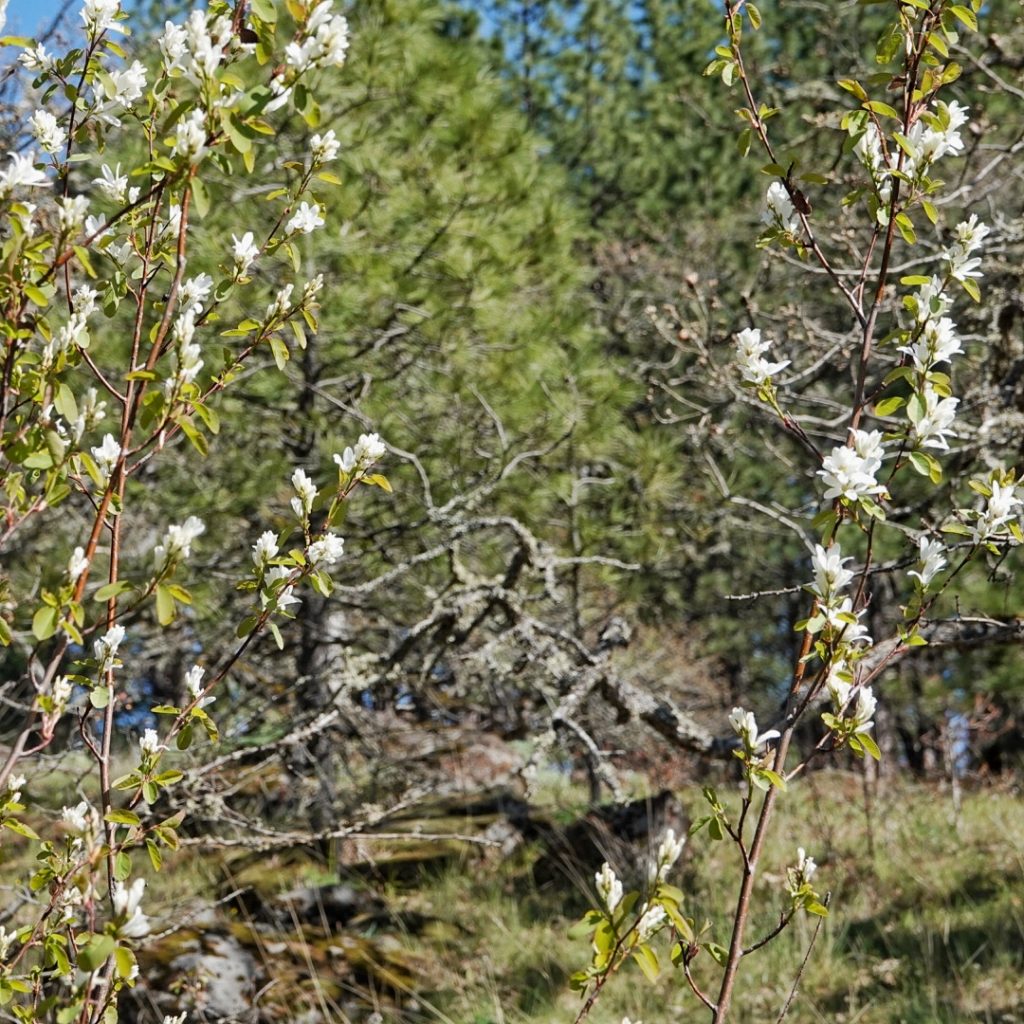
Description– This is a large shrub or tree ( mostly 15’ tall or less, but can get much larger), with erect trunks and grayish to light purple bark; leaves are ± oval, 20-40 mm long, with petioles about half that length, and margins that are broadly toothed at the base, becoming finer toward the tip; flowers white, and the petals often appear helterskelter (a colloquial name for the flowers is ‘witch’s broom’); petals are oblong and usually 3x as long as wide; flower has 4-5 styles; fruit globose, dark purple.
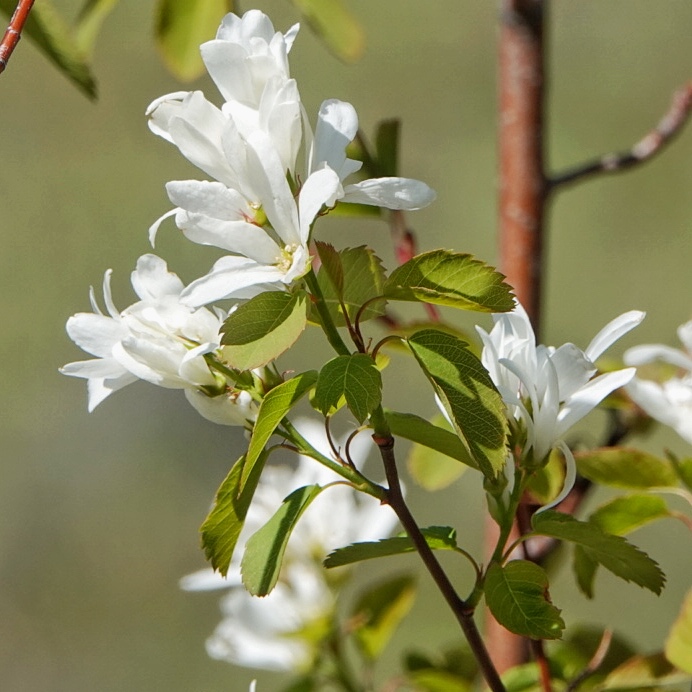
Similar species–A. utahensis tends to be under 10’ tall, and to have more irregular and intricate branching, smaller, hairier leaves, smaller, more oblong petals, 2-3 rather than 4 styles, and is found in drier and more open habitats.
Habitat-Moist to mesic to dry open woods and forests, forest openings, riparian corridors, up to 11,000’ elevation.
Range– Western North America; region wide in appropriate habitats.
Reproductive timing– Blooms late March to early June, depending on elevation; fruit ripens mid June to Mid August.
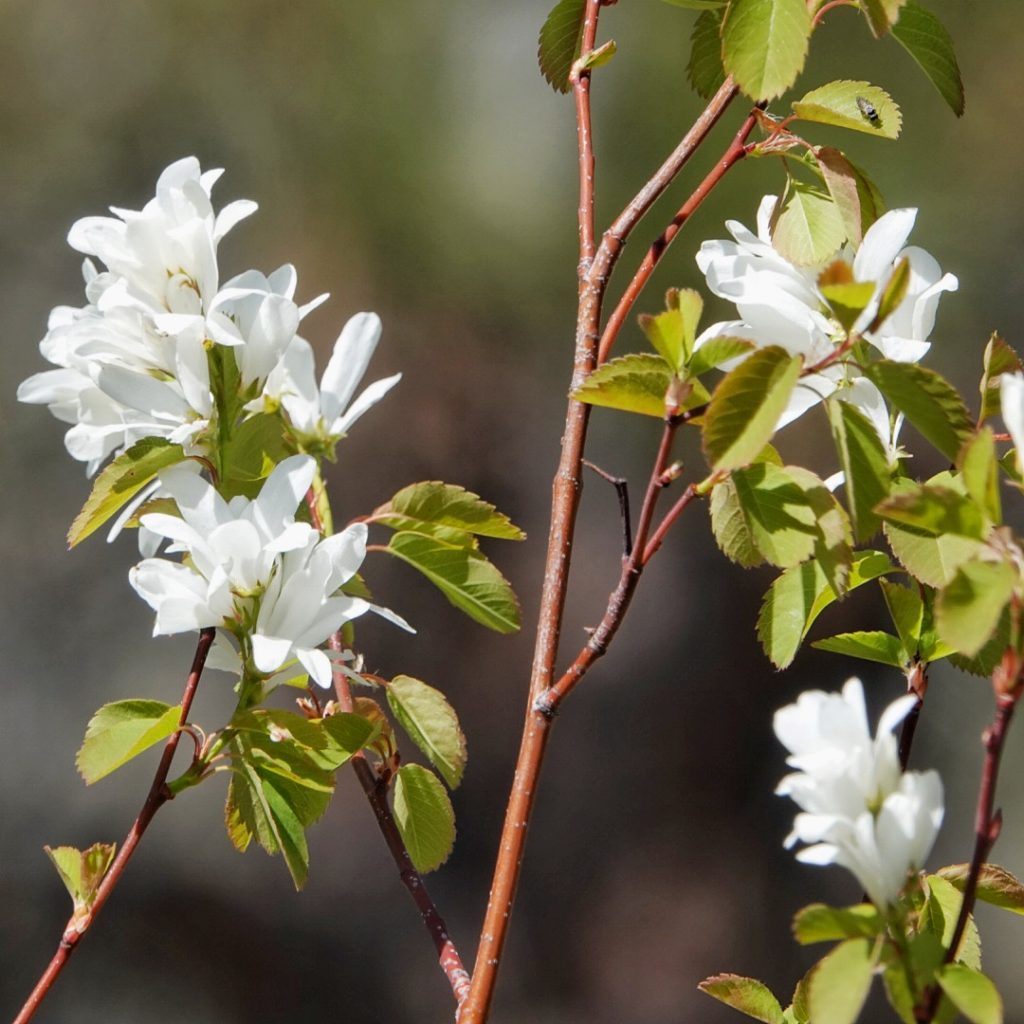
Eaten by-Deer, elk, rabbits, and other browsers feed on the leaves (although they usually choose either very fresh foliage or drying foliage because in their prime the leaves contain higher quantities of cyanotoxins), and most fruit eating birds, including Robins, Bullock’s Oriole, Cedar and Bohemian Waxwings, Mourning Doves, and Band-tailed Pigeons enjoy its pomes; the butterflies Papilio multicaudatus (Two-tailed Swallowtail), Satyrium californica (California Hairstreak), and Limenitis weidemeyerii (Weidemeyer’s Admiral) utilize this plant as a larval host, as do the moths Phyllodesma americana, Dasychira vagans, Lithophane georgii, Aseptis binotata, Pero mizon, Neoalcis californiaria, and many, many others, including one actually called the Serviceberry Leafroller Moth (Olethreutes appendiceum).
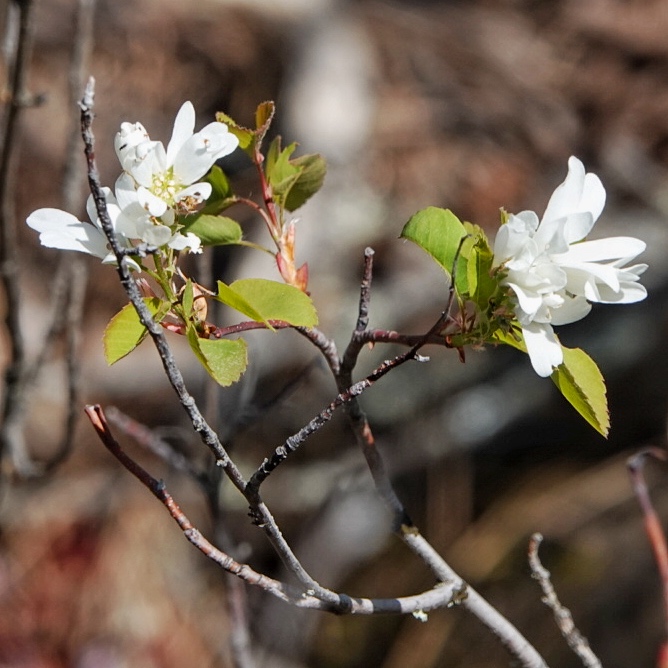
Etymology of names– Amelanchier is from the French word for shadbush, so named because they bloom when the shad run. The specific epithet alnifolia is from Latin and translates assmall alder leaf, a reference to the the foliage of this plant. The name serviceberry comes from an old tradition of waiting to have burial services for the deceased until these plants bloomed, because by then the ground would be thawed enough to dig a grave. They also made wreaths of the flowers for the gravesite.
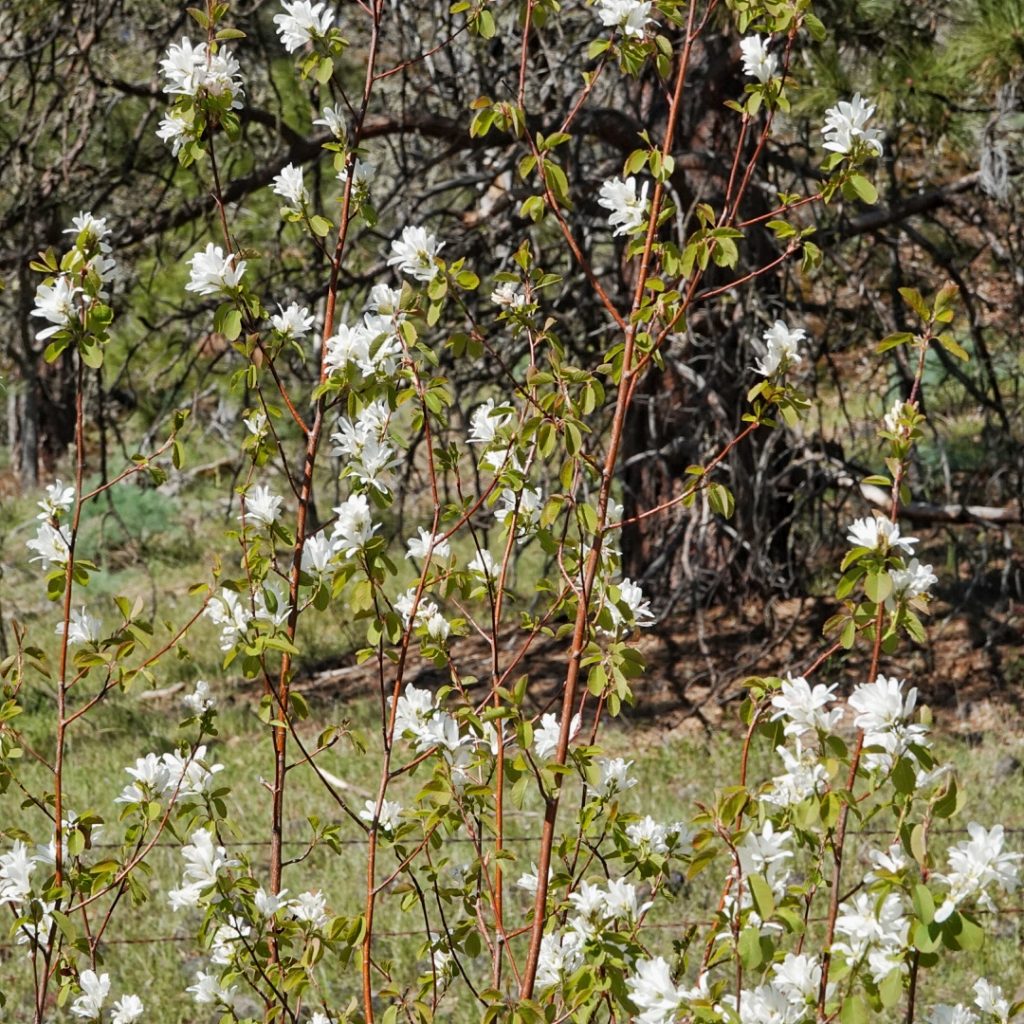
http://www.efloras.org/florataxon.aspx?flora_id=1&taxon_id=250100018
Amelanchier alnifolia | Western Serviceberry | Wildflowers of the Pacific Northwest
https://calscape.org/Amelanchier-alnifolia-()
https://plants.sc.egov.usda.gov/plantguide/pdf/pg_amals.pdf
http://naeb.brit.org/uses/search/?string=Amelanchier+alnifolia
https://www.rainyside.com/plant_gallery/natives/Amelanchier_alnifolia.html
http://linnet.geog.ubc.ca/Atlas/Atlas.aspx?sciname=Amelanchier%20alnifolia
https://eflora.neocities.org/Amelanchier%20alnifolia.html

Beautiful! I had no idea serviceberries could get that huge!